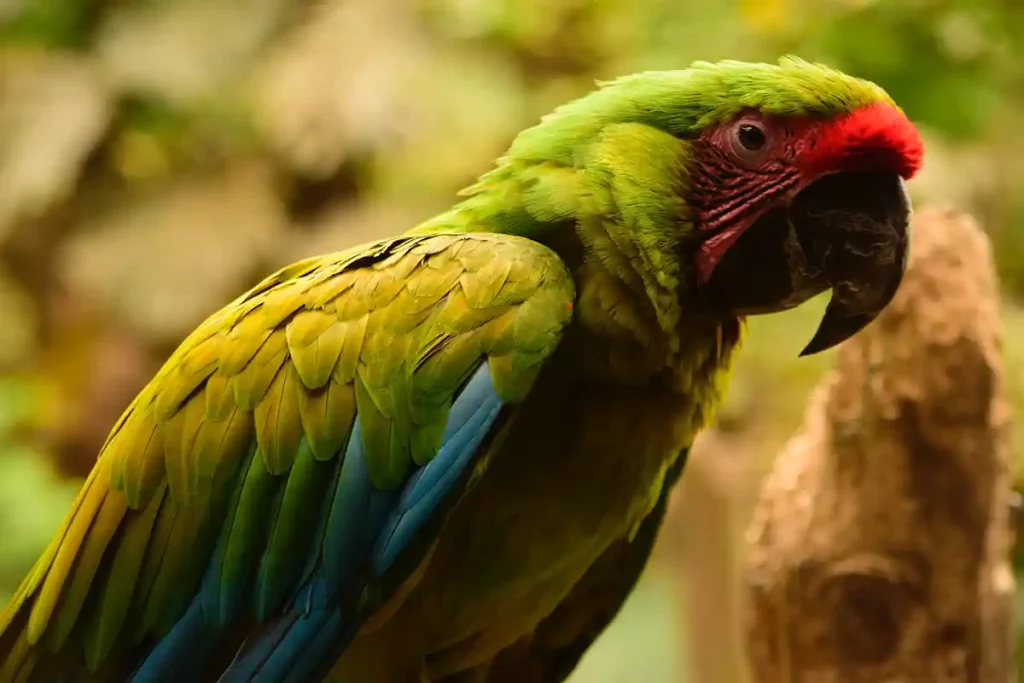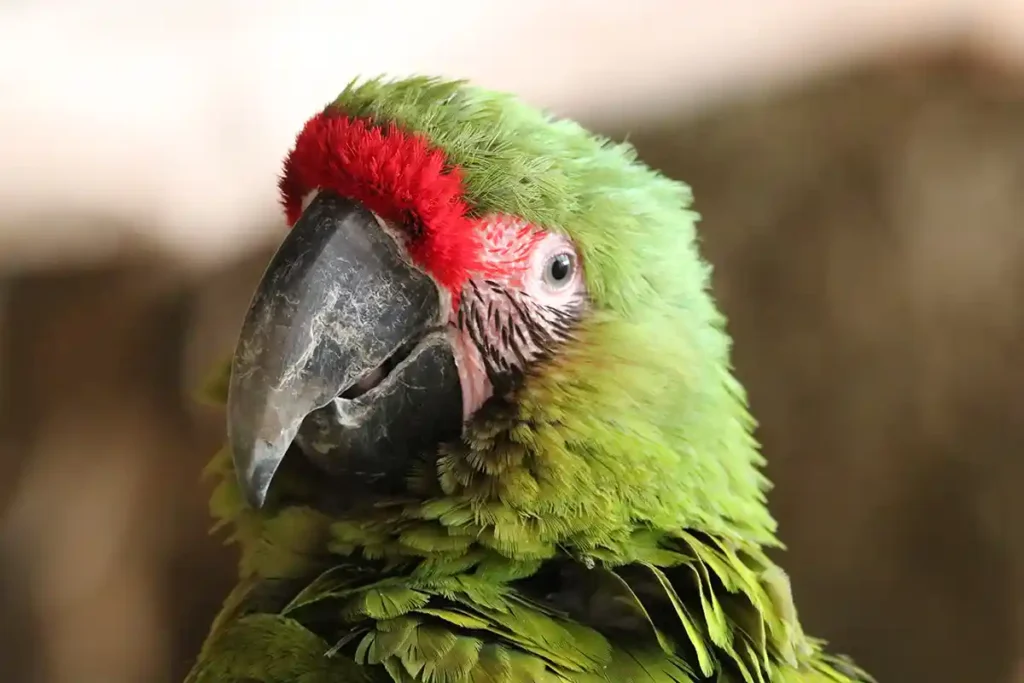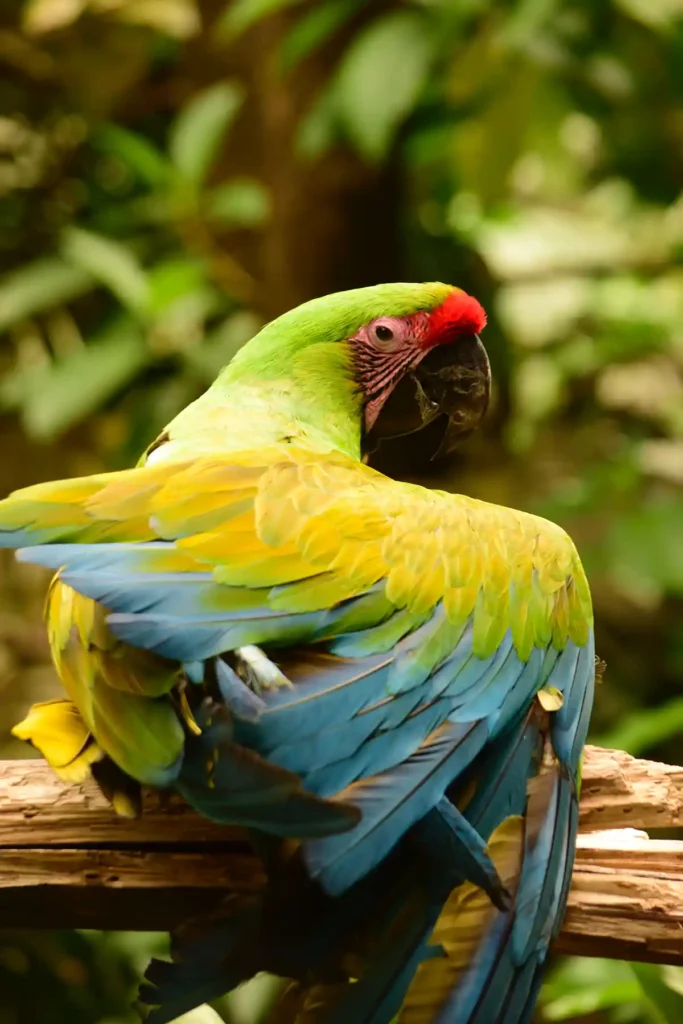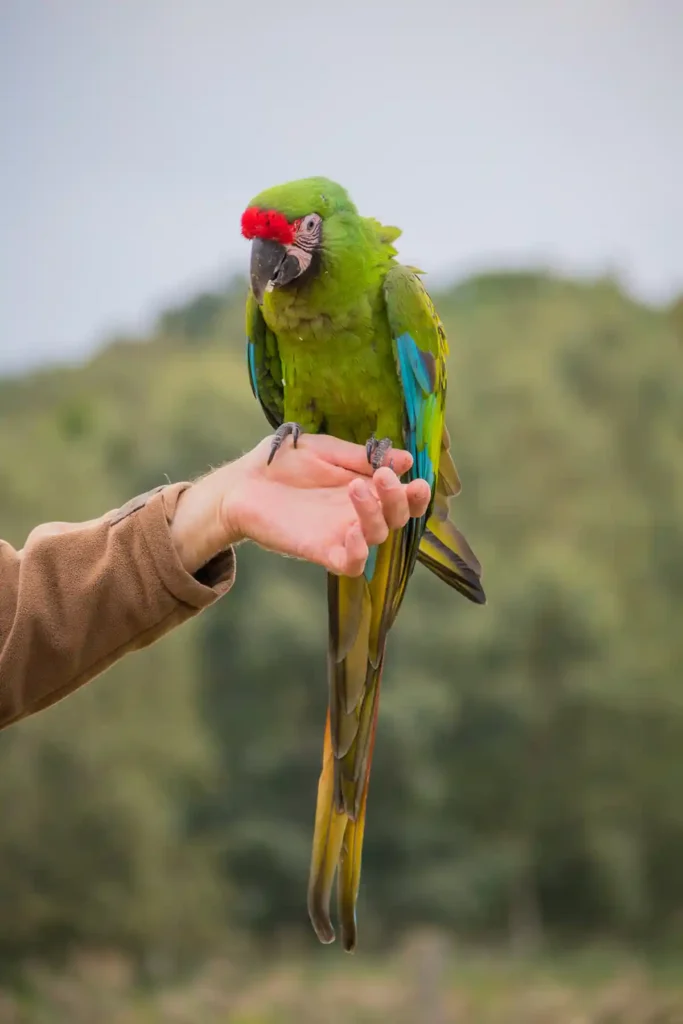
The Great Green Macaw (Ara ambiguus), also known as Buffon’s Macaw, is a colorful parrot species found in Central and South America. With its vibrant green plumage, the Great Green Macaw is a striking bird that is unfortunately facing the threat of extinction. Habitat loss caused by logging, mining, and agriculture, as well as the pet trade and shooting by farmers have all contributed to the decline of their population.
Conservation organizations, however, are making efforts to protect this majestic bird through habitat protection, breeding programs, and education and awareness efforts. In this article, we will explore the conservation efforts for the Great Green Macaw and its status in Costa Rica, Nicaragua, and Ecuador, as well as its behavior and characteristics, biodiversity conservation, and future outlook.
Behavior and Characteristics of the Great Green Macaw
Breeding Season and Nesting Habits
The breeding season of the Great Green Macaw typically takes place between January and August, with the peak nesting season being from February to May. During this time, pairs will select a suitable nesting cavity in the forest, typically in a tree of the species Dipteryx oleifera. The female will lay 2-3 eggs, which will incubate for around 26-28 days before hatching. The female is responsible for most of the incubation of the eggs, while the male will help with feeding duties after the chicks have hatched. The breeding success rate is low, with only about half of all nests producing fledged young.

Diet and Feeding Habits
The Great Green Macaw is primarily herbivorous, with a diet that consists of a variety of fruits, seeds, and nuts. They are known to feed on the fruits of several tree species, including the kapok tree and the almendro tree. They also play an important ecological role in the dispersal of seeds throughout their habitat, as they swallow and digest many of the seeds they consume, which are then excreted intact in their feces, allowing them to grow in new locations.
Vocalizations and Communication
The Great Green Macaw is a vocal species, using a variety of calls and vocalizations to communicate with other individuals. They have a loud, raucous call, with a distinctive “crick-crick-crick” sound. They are also known to make a variety of other sounds, including screeches, squawks, and whistles. These calls are used for a range of purposes, including attracting mates, communicating with others in their flock, and defending their territory.
The Great Green Macaw is a fascinating species with many unique behaviors and characteristics. Their breeding season, nesting habits, diet, and communication practices all play an important role in their survival as a species. Conserving their habitat and raising awareness about their conservation status are crucial for ensuring that these magnificent birds continue to thrive in the wild.
Similar Species and Biodiversity Conservation

Comparison with Other Macaws
The Great Green Macaw is one of the largest species of macaws, with an average length of 33 inches (85 cm) from beak to tail. It resembles another large green macaw, the Military Macaw, which inhabits South America. However, the Military Macaw is not considered endangered and is more common than the Great Green Macaw. Another macaw species that is often confused with the Great Green Macaw is the Red and Green Macaw, which also has a similar appearance but has more red feathers. The Great Green Macaw can be distinguished by its red forehead and lack of red feathers.
Importance of Biodiversity and Protection of the Ecosystem
The Great Green Macaw is not only important for its striking appearance but also serves an important ecological function in its ecosystem. As seed dispersers, they play a crucial role in maintaining healthy forests by spreading the seeds of trees such as Dipteryx oleifera, which is an important source of food for many animals in the forest. Additionally, preserving the habitat of the Great Green Macaw helps to protect other endangered species that share their habitat, such as the Scarlet Macaw and the Yellow-naped Amazon.
Conservation Efforts for the Great Green Macaw
The Role of Conservation Organizations

Numerous organizations, such as the World Land Trust and BirdLife International, are working to protect the Great Green Macaw and its habitat. One important conservation effort is the establishment of protected areas, including reserves and national parks, such as the Río Canandé Reserve in Ecuador. These initiatives aim to safeguard the biodiversity of the habitats these birds inhabit and ensure their survival. Additionally, BirdLife International works with local communities to promote sustainable livelihoods and reduce threats to the Great Green Macaw.
- The Great Green Macaw plays an important ecological role as seed disperser
- Preserving habitat of the Great Green Macaw helps to protect other threatened species
- Conservation efforts by organizations such as BirdLife International aim to safeguard biodiversity and ensure species survival.
Protection of Habitat
Protecting the natural habitat of the great green macaw is critical to its survival. Habitat loss from logging, mining, and agriculture has significantly reduced the bird’s population size. Organizations are working to establish protected areas and reserves where the birds can thrive. Creating corridors between protected habitats is also important to allow the birds to move freely and access different food sources.
Breeding Programs and Artificial Nests
Breeding programs and artificial nests are essential for the conservation of the great green macaw. These programs help increase the bird’s population size and genetic diversity, ensuring the species’ survival. Organizations work to create artificial nests to provide secure nesting locations for the birds. Breeding programs also help monitor the health and breeding success of the birds in captivity, allowing for greater understanding of their needs.
Education and Awareness Efforts
Education and awareness programs are a critical aspect of conserving great green macaws. Outreach programs in local communities and schools help educate people on the importance of the birds and their habitat. This education also raises awareness of the threats facing the great green macaws and encourages community involvement in conservation efforts. Eco-tourism can also support conservation by providing economic incentives for communities to preserve the bird’s habitat.
The Great Green Macaw in Costa Rica

The Great Green Macaw inhabits humid and wet forests of Central and South America, including Costa Rica. These birds can reach up to 90 cm in length and have a vibrant green body with red and blue accents on their wings and tail. In the wild, they move in pairs or small groups, flying high in the canopy and feeding on the fruits of various tree species such as Dipteryx oleifera and the scarlet macaw’s favorite, the maiz biological tree.
Costa Rica is home to a significant population of Great Green Macaws, estimated to be around 300 to 400 individuals. Conservation efforts in Costa Rica have focused on habitat protection and reforestation, which has helped increase the population of these birds in certain areas. The government has also implemented regulations restricting the pet trade of Great Green Macaws, and the species is protected under the country’s Wildlife Conservation Law.
Costa Rica is known for its ecotourism opportunities, and seeing the Great Green Macaw in the wild is a unique experience for some tourists. Tourists can visit several national parks in Costa Rica that are home to Great Green Macaws, including Carara National Park and Corcovado National Park. Eco-lodges and tour companies in the area offer guided tours and birdwatching experiences, providing a way for tourists to observe these beautiful birds while promoting education and conservation.
The Great Green Macaw in Nicaragua

The Great Green Macaw can be found in several parts of Nicaragua, including the Pacific slope and the Caribbean lowlands. In the wild, they inhabit humid forests and riparian areas, typically between 150 and 700 meters above sea level. These areas are characterized by tall trees, including the Dipteryx oleifera species, which is an important food source for the macaw.
The Great Green Macaw is considered critically endangered in Nicaragua due to the loss of their natural habitat. Agriculture, logging, and mining have contributed to the destruction of forests where the macaw lives. However, conservation organizations like the World Land Trust and Paso Pacífico are actively working towards protecting the bird and their habitat.
Community Involvement and Conservation Strategies
Local communities in Nicaragua are often involved in conservation efforts for the Great Green Macaw. For example, Paso Pacífico works with farmers to grow crops that do not require deforestation and provides alternative sources of income to communities. The organization also trains locals to be rangers, who monitor and protect the macaw’s habitat. The World Land Trust has established the ‘Mina Verde Private Reserve’ in Northern Nicaragua to protect the Great Green Macaw and other endangered species.
- Community involvement and education: Conservation organizations work with local communities to raise awareness about the importance of protecting the Macaw and its habitat.
- Habitat preservation: Non-profit organizations purchase land to protect the natural habitat of the bird. They also work with farmers to promote conservation practices and alternative sources of income.
- Monitoring and protection: Rangers and volunteers monitor the macaw’s habitat for illegal activities such as logging, hunting, and mining. They also work towards minimizing contact between macaws and humans to avoid negative impacts.
Overall, conservation efforts in Nicaragua are focused on protecting the Great Green Macaw’s habitat and raising awareness about the importance of protecting the species. By working with local communities, organizations are able to implement sustainable conservation practices that benefit both the macaw and the people who live in the region.
The Great Green Macaw in Ecuador

The Rio Canandé Reserve is a protected habitat in northern Ecuador that is home to the Great Green Macaw. The reserve covers over 6,000 hectares and is surrounded by forests of Dipteryx oleifera, a tree species that provides nesting sites and food for the macaws. The reserve is also home to over 360 bird species, including threatened and endemic birds, making it an important area for biodiversity conservation.
Conservation efforts in Ecuador aim to protect the Great Green Macaw’s habitat and raise awareness about the importance of the macaw for the ecosystem. Organizations such as the Maiz Biological Reserve and the Wildlife Conservation Society focus on habitat restoration and monitoring the macaw populations. The Maiz Biological Reserve also works with local communities to promote ecotourism as an alternative to logging and agriculture, which threaten the macaw’s habitat. Additionally, conservationists use artificial nest boxes to encourage breeding and raise awareness about the bird’s plight.
Partnerships and Collaborations in Ecuador
Partnerships and collaborations in Ecuador involve various organizations, such as the World Land Trust, BirdLife International, and local communities. The World Land Trust supports the Maiz Biological Reserve and aims to expand the reserve’s protected area. BirdLife International works with local communities to promote the conservation of the Great Green Macaw and other bird species. As a result of these partnerships and collaborations, conservationists in Ecuador have been able to promote habitat protection, support breeding, and raise awareness about the plight of the Great Green Macaw.
In conclusion, Ecuador plays a critical role in the conservation efforts for the Great Green Macaw. Efforts to protect the bird’s habitat and promote awareness have been successful thanks to the work of conservation organizations and local communities. However, more needs to be done to ensure that the macaw populations continue to thrive in the wild.
